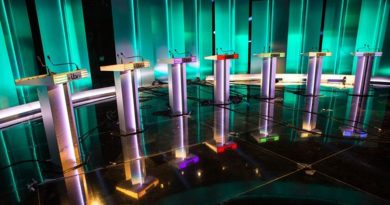Election live two-ways: How far should journalists interpret the politics?
Posted by: Dr Stephen Cushion
Although electioneering has been ongoing for many months now, it is during the so-called short campaign when the politics of the election become electrified. After Parliament dissolves on 30 March politicians are free from their legislative duties and able to campaign around the clock. While campaign spending is restricted, all political parties step up a gear in the six-week run up to election day.
For political journalists working in broadcast media, the short campaign also represents a time of heightened anxiety and closer regulatory oversight. Unlike newspapers or online media, broadcasting is a highly regulated medium, making it a challenging prospect to report a complex campaign when so many different political parties could potentially form a coalition government.
But while debates about impartiality typically focus on how broadcasters balance party political perspectives, less attention is paid to how journalists interpret campaign news. And yet academic research has long established that politicians’ soundbites have shrunk in length, potentially leaving more time for journalists to speak for and about political parties.
In News and Politics: The Rise of Live and Interpretive Journalism, I’ve examined the changing nature of BBC, ITV and Channel 5 evening bulletins over recent decades. And research points to TV journalists gradually appearing in live rather than edited news formats, most strikingly in the two-way convention. (Patterns on rolling news channels are perhaps a study for another day.)
The sample we looked at in 2012 had a high volume of stories about crime, business and politics. When the main different topics were compared, political coverage stood out as being the most live-reported subject.
Indeed, political editors took up a considerable share of airtime. In our 2012 study Nick Robinson and Tom Bradby (above) made up approximately 10% of all coverage examined – increasing to a quarter and a fifth of all live news respectively. Channel 5’s political editor Andy Bell meanwhile featured in a fifth of all Channel 5 news and more than 40% of all live coverage.
But it is not just the enhanced presence of political journalists in live coverage that has implications for reporting the 2015 general election campaign. It is the context in which they appear. After all, downsizing edited news means relying less on interviewing sources or carefully scripting a story throughout the day. For the rise of live two-ways puts journalists – not politicians – at the centre of the story, thrusting them into an interpretive and analytical role.
Of course two-way reporting can be more descriptive than interpretive, providing context without necessarily forming judgements about the latest political drama. But according to the BBC’s Nick Robinson, live two-ways have become more interpretive in recent decades and can today be defined as being “partly commentary, partly sketch and partly reporting”.
This is not to suggest that political reporters have become highly partisan Fox News-type commentators, pontificating at length about their personal predilections. Journalists appear instead to be exercising what Richard Sambrook calls professional judgments, rather than personal opinions.
Given the enhanced role of live political reporters on TV bulletins, how interpretive should they be during the election’s short campaign when parties will be eager to pounce on any hint of bias? While there has been widespread discussion about the role of social media in the run up to election day, political parties are well aware that broadcast news – in particular on TV – remains by far the most widely trusted and consumed source of media during the campaign, notably for older people who are most likely to vote.
As the main public service broadcaster, the BBC is the most open to political attack. In recent discussions about whether broadcasters should go ahead with the televised leaders’ debates without David Cameron, it was the BBC – not ITV, Channel 4 or Sky – that was often singled out for potentially being in breach of its impartiality requirements.
Understandably sensitive about its election coverage, the BBC has issued specific editorial guidelines about how the campaign should be covered, from balancing party sources and reporting opinion polls to how journalists should use social media. But as Charlie Beckett recently pointed out, these – as well as Ofcom’s election guidelines – could be difficult to follow in a fast-moving campaign when so many parties could swing the balance of power. Indeed, the decision to grant UKIP major party status during the campaign, but exclude the Greens, has become a debating point.
The BBC’s election guidelines reminded journalists that “news judgements continue to drive editorial decision-making in news-based programmes”. This perhaps suggests live two-way political reporters should not be cowed and continue to make “judgements” during the campaign irrespective of the pressure they face from political parties.
Not everyone, of course, welcomes a shift towards interpretive journalism. Some see it as granting too much power to unelected journalists, compromising the impartiality of broadcasters or focusing on the spin behind parties. But as politicians have become increasingly professional – sticking closely to their party’s election script – there has arguably never been a greater need for journalists to cut through the spin and explain the meaning behind a soundbite or campaign rally.
While edited packages police impartiality by routinely conveying the main parties’ agendas, live two-ways have the potential to deliver more democratic value. This could involve moving beyond interpreting the parties’ latest campaign posturing that fascinates so many in the ‘Westminster village’. And instead ask journalists to be even bolder in their interpretation of everyday politics, drawing on a wider range of policy expertise and knowledge, or engaging more with voters’ concerns and issues to inform their live two-way judgements.
In doing so, reporters could step back from the frenetic pace of the news cycle and consider more thoughtful ways of holding politicians to account and communicating news about the campaign.
This blog was originally posted on the BBC Academy’s Blog


